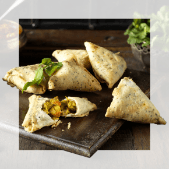We are entering that time of year where outdoor fire becomes central to community celebration.
And where you have fire, food often follows either cooked on the flames or in the good old fashioned kitchen.
Though Bonfire Night might be the most famous of those events in this part of the world, fire customs date far further back in time than that.
The Gunpowder Plot of 1605 aimed to blow up Parliament but was foiled by an anonymous tip-off. The plotters were captured and executed and now on November 5 bonfires are lit across the UK in commemoration.
A custom of wrapping potatoes in silver foil and baking them in the ashes of the bonfire for a delicious and warming snack developed. If a plain potato isn’t your thing you can transform it by adding spoonfuls from our dips and sauces range, and if you don’t want to go hunting for a spud in the ashes of a fire, SK can offer our delicious loaded potato skins instead.
At each such community bonfire parents can be heard wailing the traditional chant to children of “don’t get too close” but there are some festivals where being kissed by the ashes is applauded.
Dating back 1000 years before Bonfire Night, the festival of Oniyo is held every January at the Daizenji Temple in Kurume, Japan and sees an enormous “devil” fire built and allowed to burn for several days.
As part of an ancient ritual to ward off evil spirits, the bonfire is then split into six large torches with dozens of locals wearing loincloths using sticks to carry and parade each flaming torch around the area. If any floating ash falls on you it is considered good luck.
Fire or no fire and whether you’re wearing a loincloth or normal attire, it can still get chilly at the turn of the year and a warming selection of our Japanese inspired food including karaage or katsu chicken goes down a treat.
Emerging in communities across India around the same time as Oniyo, the festival of light known as Diwali continues to this day and is now celebrated each year around the same time as Bonfire Night across the world.
It marks the spiritual victory of light over darkness, good over evil, and knowledge over ignorance, with beautiful candles and lanterns used to light up homes and spectacular fireworks displays bringing communities together.
Inviting guests to your home to share in a feast of different dishes is integral to Diwali, so our range of Indian food is perfect for this occasion.
Or no doubt, depending on where you live in the country you might go for a regional dish and given our roots in the North East, for this week’s recipe we have gone for something very local, although you will see lots of regional variations of it in the UK, such as Stovies in Scotland and Scouse in Liverpool.
Panackelty
Ingredients:
- 4 Potatoes
- 2 Carrots
- 2 Sticks of Celery
- 1 Leek
- 3 Cloves of Garlic
- 1 tsp Thyme
- 1 tsp Rosemary
- 1 tsp Sage
- 4 tbsp Worchester Sauce
- 2 tbsp Tomato pure
- Beef Stock
- Salt & Pepper
- 2 Bay Leaf
- 2 Tins of Corned beef
- ½ Glass of Red Wine
- 1 tbsp Flour
- 1 swede
Recipe:
For this classic, regional dish, firstly get a large pot on the stove on a medium to high heat and add olive oil. Dice the onion, carrots, leek and celery and add to the pot. Start to sweat down the vegetables then add minced garlic. Once the vegetables have softened, add tomato pure and flour. Cook the paste and flour out for a couple of minutes then add red wine and reduce. Then add beef stock. Add the potatoes and swede and simmer for 30-40 minutes. Chop the corned beef into chunks and add to the stew, make sure that the panackelty is reduced and almost ready to serve before doing so. Optionally, add chopped flat leaf parsley at the end. Make sure the dish is well seasoned with salt and pepper. Panackelty is just as good, if not better the morning after! So don’t be afraid to let it cool, and place in the fridge overnight.
To make a more traditional Panackelty, cook the stew using chunky vegetables and without potatoes, then add to a casserole dish and add sliced potatoes on top, almost like a cottage pie. Brush the top with butter, rock salt and fresh thyme, then bake for 30-40 minutes on 180 degrees. This again, is better the next day!






